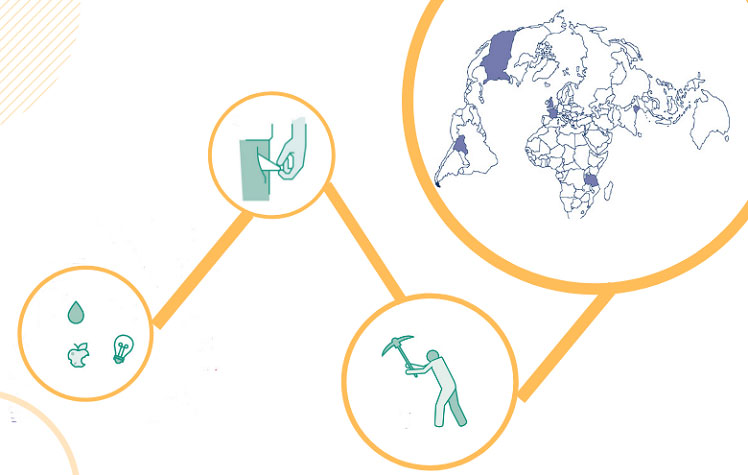Most Visible Dimension of Poverty: Lack of Resources

ATD Fourth World, in partnership with Oxford University, conducted a participatory international research project called “The Hidden Dimensions of Poverty”. The project took place in six countries: Bangladesh, Bolivia, France, Tanzania, the United Kingdom and the United States. One of the conclusions: the most visible dimension of poverty is lack of resources.
For three years, people living in poverty, professionals and academics worked together to clarify how we understand poverty and its multi-dimensional aspects. Research teams defined nine interdependent dimensions common to all countries. The long-term goal of this project is to help develop better policies to eradicate of poverty.
Lack of monetary, material and social resources is the most visible dimension of poverty. These deprivations prevent people in poverty from living with dignity. Both political conversations and some current multi-dimensional indicators of poverty also acknowledge these sorts of deprivations.
Lack of Decent Work
Lack of decent work refers to the prevalent experience of being denied access to work that with fair pay, safe, secure, regulated and dignified. Often people start working when they are very young, and from this moment they experience exploitation, bad treatment and humiliation.
“We have no choice, we have to do the work that others don’t want to do. Our children are not able to continue their studies because we don’t have enough money.”
(Person in poverty, France)
Pay is rarely fair in relation to market rates or hours worked and may be offered in kind rather than as cash.
A woman working in a quarry as a stone breaker said, “We are overworked but underpaid. Most women who work in the quarry usually wake up at 5 am and work from 6 am to 4 pm. At the end of the day, they are paid Tsh 2000 – 5000 (around $ 0.85 – 2.10).” (Woman in poverty, Tanzania)
Some workers are paid nothing at all, through breach of contract or as indentured labourers. Many are forced to travel long distances to work or to migrate in search of employment, necessitating living apart from their families.
Broader relational, organisational or entrepreneurial skills gained through daily life in poverty are not recognised.
Insufficient and Insecure Income
This dimension refers to having too little income to be able to meet basic needs and social obligations, to keep harmony within the family and to enjoy good living conditions.
“Poverty is worrying about money all the time.”
(Person living in poverty, UK)
Without sufficient money, people may go into debt to cover basic needs, thereby becoming more dependent on others and at risk of exploitation and greater economic insecurity. Sometimes, low adult incomes mean that their children must work to support the family. This work can put children in physical danger and at risk of abuse.
“Parents forcing their young daughters to marry early to receive the dowry; having to wear old, broken and worn clothes; cannot repair house; no toilet; lack of clothing; cannot even buy soap; no electricity, no kerosene, no lamp to study; cannot go to school; child labour; empty stomach obliges to steal food; pain for not being able to afford food, treatment; insolvency, high interest credits; dependency; feeling helpless; begging, prostitution.”
(Characteristics of the ‘Lack of money’ dimension, Bangladesh)
Material and Social Deprivation
Material and social deprivation refers to a lack of access to goods and services necessary to live a decent life, participating fully in society.
The necessary resources include: sufficient nutritious food; adequate clothing; affordable, quality housing with good sanitation, clean water and reliable energy supply providing security and privacy; non-discriminatory education in well-equipped schools; affordable, accessible and effective health and dental care; serviceable public transport; and non-hazardous environments.
“Overcrowding is terrible, the whole extended family lives in one room of 3 x 3. If you live in the same place that you cook in, the humidity affects your health.”
(Practitioner, Bolivia)
“Some pupils come to school without tucking their shirts into their shorts and a teacher punished them. He did not know that they did so to avoid shame by hiding their torn shorts and lack of underwear.”
(Practitioner, Tanzania)
Lack of access to these resources means individuals, families, and communities being unable to meet daily needs, to live with dignity, or to have sufficient quality time for family or personal growth, and children being denied the possibility to grow and develop normally.
Download the full “The Hidden Dimensions of Poverty” report.

